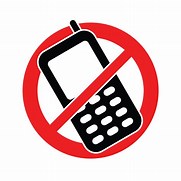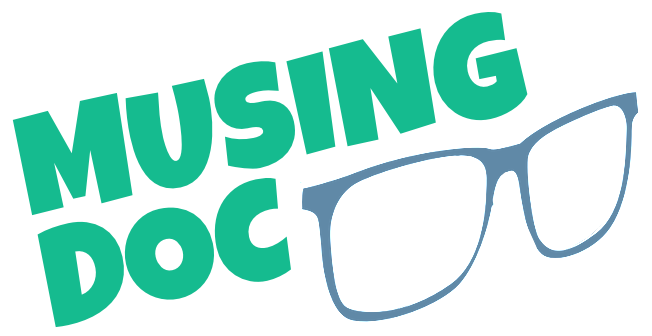Note: I wrote this for patients under the Italian national health service, which is funded by payroll tax and the “IVA” – a value-added tax – on most goods and services. This is certainly not “free” health care. Soon the IVA may reach 23%, which would be disastrous for most if it were not for the hidden economy of “il nero,” that is, the vast unreported sums exchanged every day in Italy which escape the eye of the tax man. Italians do enjoy a big safety net, a sort of catastrophic coverage, which prevents personal economic ruin in case of serious illness or injury. But, as is the case with many government-run programs, it is tainted by waste, bureaucratic inefficiency and corruption. As a result Italians have learned to accept long waits and inconveniences which Americans would consider totally unacceptable.]

A Familiar Sight
We’re all well acquainted with the scenario of the Italian generalist doctor’s waiting room, crowded with people seemingly parked there for hours. Just the mere thought of having to go to the doctor is daunting – sitting shoulder-to-shoulder with sniffling and coughing patients, leafing through old magazines and being forced to overhear the cell phone conversations of others, especially if we don’t feel well ourselves. I’ve been a physician for over forty years and I understand these frustrations completely. And I don’t get to cut into the head of the line, either. Now I’m just a patient. A bump on the medical log. Someone observed that no matter how early you arrive at the office there will always be a couple of elderly patients there ahead of you- how true!
 When the number of patients is on the rise and there are less doctors available it stands to reason that the time available for each patient visit will be limited. And if you consider that the doctor often arrives late – and there is usually a patient who asks you if it’s OK to go in before you because he or she has a “small” problem – the visit time shrinks even further. When I sit in the waiting room in silence I overhear many patients grumble that doctors never spend enough time with them. Others shuffle their feet or wear a pained expression when the doctor spends what they consider is too much time with the patient ahead of them, knowing nothing of the circumstances. Universally they lament the passing of the old-fashioned medico condotto – analogous to the country doctor – who would get up at any hour of the night and come their homes in a buggy, where a potent purgative would always revive an ailing patient rapidly.
When the number of patients is on the rise and there are less doctors available it stands to reason that the time available for each patient visit will be limited. And if you consider that the doctor often arrives late – and there is usually a patient who asks you if it’s OK to go in before you because he or she has a “small” problem – the visit time shrinks even further. When I sit in the waiting room in silence I overhear many patients grumble that doctors never spend enough time with them. Others shuffle their feet or wear a pained expression when the doctor spends what they consider is too much time with the patient ahead of them, knowing nothing of the circumstances. Universally they lament the passing of the old-fashioned medico condotto – analogous to the country doctor – who would get up at any hour of the night and come their homes in a buggy, where a potent purgative would always revive an ailing patient rapidly.
It is wonderful indeed when the office door finally opens and a patient walks out, making way for the next. Finally our chance to voice our concerns with the doctor has arrived. This is a precious moment to be used to maximum profit by following a few simple suggestions:
• Turn off your cell phone – an incoming call disrupts your train of thought and wastes the doctor’s time as well
• Bring along those medical documents strictly related to your current problem (specialist visit referrals, X-ray reports, and hospital discharge summaries are among the papers which patients are expected to keep and show to their primary medical doctor, to be entered into his computer). Some patients bring huge volumes of old and largely illegible charts, hoping that the doctor will dig out whatever he wants in just a few minutes! Telephone calls between physicians to clarify concerns about a patient would often be very helpful and time-saving but are seldom done, for reasons I do not yet understand and probably never will.
• Describe your most important complaint first and list your symptoms, avoiding using medical terminology or repeating tentative diagnoses proposed in the past – it’s best to let the doctor arrive at his own diagnosis by listening to what you actually feel. Just because another doctor suggested you might have “gastritis,” for example, it’s possible that your doctor may arrive at another and better conclusion entirely after hearing your description and doing a physical exam.
• Stick to your medical problem and avoid digressions. A brief general conversation helps to put you at ease, but avoid long personal anecdotes, jokes and any other subjects not relevant to your immediate problem. It’s hard for the doctor to sort out your complaints and enter them into the computer while chatting with you. Ever try to converse with someone in person while you compose a text message on your cell? Not easy, is it? And, though you may not perceive it, the doctor is under pressure to maintain “patient flow,” that is, to see all those who are waiting after you, so that all may benefit.
• If you don’t understand something, speak up. A moment spent now may prevent a medication error in the future. We doctors often lapse into medical jargon and abbreviations when talking with patients and their families. This is a bad habit we’ve acquired when talking with colleagues. A patient cannot be expected to understand what “MI” or “DVT” means – the physician should try to explain these concepts in simple terms. While many understand that a “heart attack” is an MI, less will figure out that DVT means “deep vein thrombophlebitis,” or a clot in a deep leg vein. Patients sometimes pretend to understand what we’re explaining – it is a mistake not to take us to task right then and there for clarification.
• Smile a lot. This is not easy when you are hurting or afraid but sets the tone of the visit. A smile and friendly attitude will make the visit more relaxed and fruitful. Even the grumpiest, most irritable of doctors (I have been one of those more times than I care to admit!) will soften and will respect you all the more for trying to be pleasant in such trying circumstances.
A medical visit can be satisfying for both patient and doctor if they can communicate effectively and do so within the allotted time. You both can exchange important and sometimes even lifesaving information in even a moment if you remain focused. In the current climate it’s unlikely that physicians will find more time to spend with each patient – al contrario, it seems to be a race against the clock no matter in what health system you find yourself!

Doctor, Just so on the States side of the pond. He we make our appointments on line to reduce the office waiting room crush yes, but time and tide wait for no one.
We have found that extensive use of nurse practitioners and midwives in primary care helps to bring more care to the front lines
As an administrator of a practice in the USA my mantra to my doctors/nurse practitioners was start on time, stay on time, go home on time. I found start on time is the simplest and best way to make a great day for both patient and caregiver.